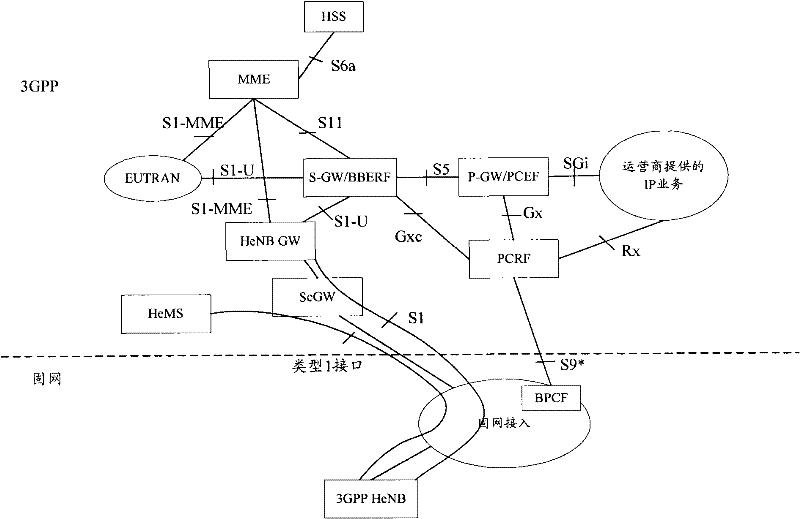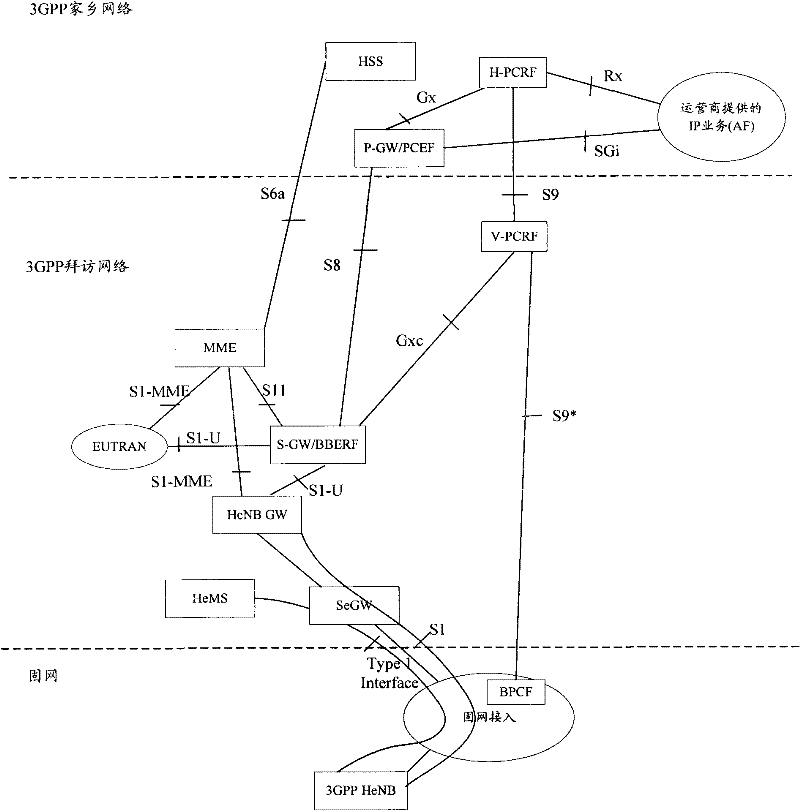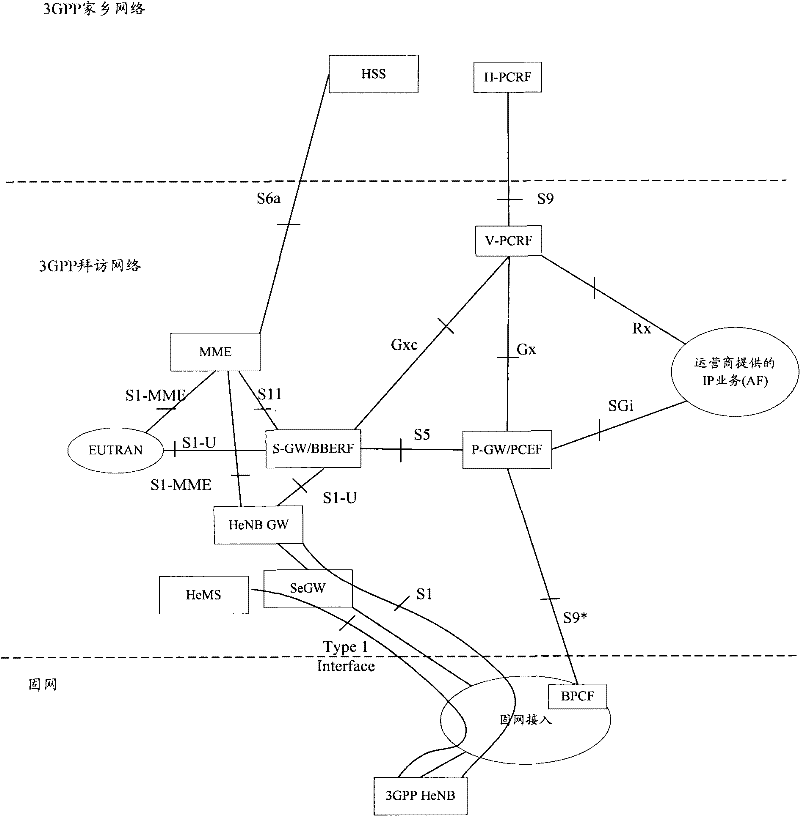Authorization request method, system and device
An authorization request, IP-CAN technology, applied in the field of communication, can solve the problem of uncontrollable sharing of the same contracted fixed network line
- Summary
- Abstract
- Description
- Claims
- Application Information
AI Technical Summary
Problems solved by technology
Method used
Image
Examples
Embodiment 1
[0063] Figure 14 It is a flow chart according to Embodiment 1 of the present invention, Figure 14 shows based on Figure 8 and Figure 11 In the non-roaming architecture, when the UE establishes an IP-CAN session, PCRF and I-PCRF, and I-PCRF and BPCF respectively establish sessions and perform the process of QoS authorization. Among them, the IP-CAN session established by the UE does not have BBERF, including the following steps:
[0064] Step S1401: During the process of the UE requesting to establish an IP-CAN session, the PCEF receives a request to establish an IP-CAN session message, and the request to establish an IP-CAN session message carries the user ID of the user and the PDN ID of the PDN network that requests access , broadband connection information and optional CSG information, etc. Wherein, the broadband connection information may be the public IP address of the residential gateway (Residential GateWay, RGW for short) connected to the HeNB, or the line iden...
Embodiment 2
[0082] Figure 15 It is a flow chart according to Embodiment 2 of the present invention, Figure 15 shows based on Figure 8 In the non-roaming architecture, when the UE establishes an IP-CAN (IP-Connectivity Access Network, IP connection access network) session, PCRF and I-PCRF, and I-PCRF and BPCF establish sessions respectively, and perform QoS authorization process. Among them, the IP-CAN session established by the UE has BBERF, including the following steps:
[0083] Step S1501: In the process of the UE requesting to establish an IP-CAN session, BBERF receives a request to establish an IP-CAN session message, and the request to establish an IP-CAN session message carries the user ID of the user and the PDN ID of the PDN network that requests access , broadband connection information and optional CSG information, etc. The broadband connection information can be the public IP address of the RGW connected to the HeNB, or the line identifier of the RGW, or the username sig...
Embodiment 3
[0104] Figure 16 It is a flow chart according to Embodiment 3 of the present invention, Figure 16 shows based on Figure 9 , Figure 12 Home routing roaming architecture, when the UE establishes an IP-CAN session, H-PCRF and I-PCRF, and I-PCRF and BPCF establish sessions respectively, and perform the process of QoS authorization. Wherein, there is no BBERF in the IP-CAN session established by the UE. Figure 16 specific steps and Figure 14 The steps are similar. The main difference is: the PCEF is located in the home network, and the message received by the PCEF to request the establishment of an IP-CAN session carries the ID of the visited network where the UE is currently roaming, and the PCEF will send the ID to the H-PCRF, so that the H-PCRF will The interworking session establishment message is sent to the visited network, and the visited network selects the I-PCRF according to configuration information and broadband connection information.
PUM
 Login to View More
Login to View More Abstract
Description
Claims
Application Information
 Login to View More
Login to View More - R&D
- Intellectual Property
- Life Sciences
- Materials
- Tech Scout
- Unparalleled Data Quality
- Higher Quality Content
- 60% Fewer Hallucinations
Browse by: Latest US Patents, China's latest patents, Technical Efficacy Thesaurus, Application Domain, Technology Topic, Popular Technical Reports.
© 2025 PatSnap. All rights reserved.Legal|Privacy policy|Modern Slavery Act Transparency Statement|Sitemap|About US| Contact US: help@patsnap.com



